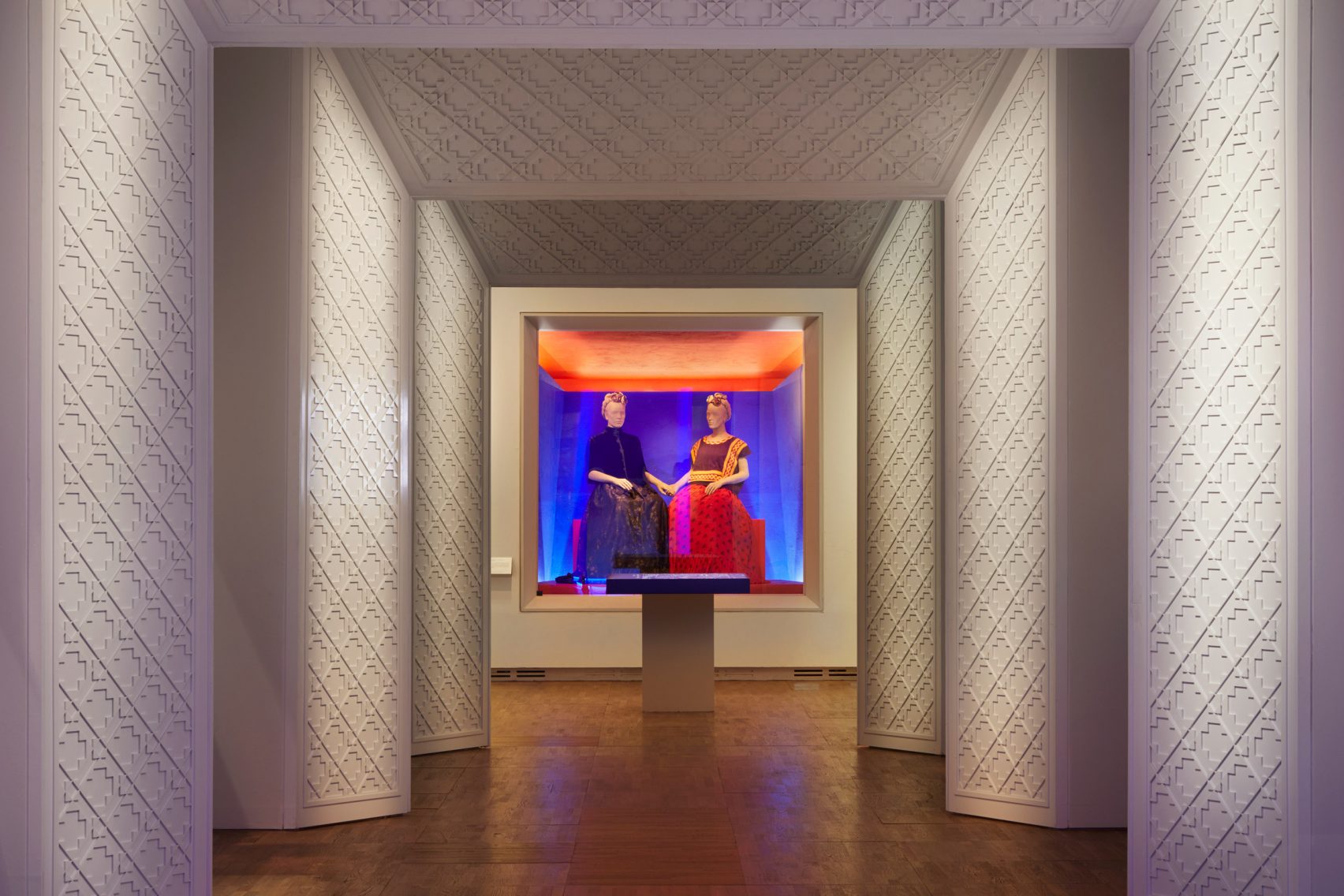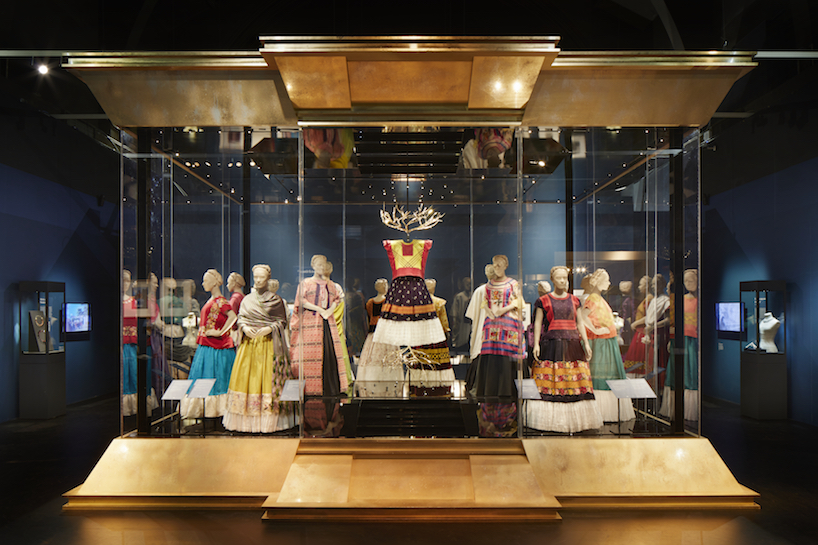Frida Kahlo at the V&A and La Casa Azul
The Victoria & Albert Museum’s blockbuster exhibition Frida Kahlo: Making Herself Up on the world renown artist finished in London a couple months ago. Kahlo continues to make her appearance around the world. This short article is a reflective account of the exhibition compared to a visit to her house turned museum, La Casa Azul, in Mexico City.
Since its 2004 discovery from a locked away bathroom, some of Frida Kahlo’s personal artefacts displayed in the V&A exhibition were making first-time appearances outside Mexico.
The exhibition drawn viewers in with documentation-style photographs and videos, arranged neatly in a white corridor as an invitation to explore the historical figure’s family history and political backdrop in an academic environment. In a categorised manner, the galleries are then divided into thematic aspects of Kahlo’s life: medical history, her (and Diego Rivera’s) political activities, her paintings, and wardrobe. Although the writings, corsets and a prosthetic leg are immensely private objects, and the design term was thoughtful in building bed frame inspired display units, the setting simply acknowledges that the artist passed away in 1954, now left with this intimate collection for us to study as a past-time heroine. It is an empirical, knowledge-driven experience, as Jonathan Jones commented, ‘…like visiting an exhibition of a dead Aztec queen’s tomb treasures. This is an archaeological exhibit, not an artistic one’.
The curation of her personal artefacts highlighted themes including ‘pain’, ‘love’, ‘emotions’, which echoed the popular topics of modern feminist character especially among the international museum audience. While her recognised image is indeed womanly, the narrative seen here almost ‘feminises’ her - where in real life, Kahlo photographed in men’s clothing, presented herself without flattery, emphasising her faint moustache and exaggerating her heavy eyebrows, and has a gender-neutral appeal in modern western context.
Touring through Mexican political history, Kahlo’s career and personal life, the exhibition ended with a glorified display of her wardrobe – a fashion shoot style ‘wow’ moment reinforcing the ‘global brand’ image of Kahlo (1). The artist’s signature fashion style is arguably the most visually marketable aspect of her image. Her choice for wearing Tehuantepec outfits has often been explained as a way to hide her weak right leg and to please her husband. While both are valid reasons, the clothing had specific feminist connotations: the Tehuanas were reputed to be independent and proud, where women controlled the local economy and gained equal positions with men. Therefore, Kahlo and her friends’ choice of clothing signified statements on ethnicity, class, gender and power (2).
In sharp contrast, La Casa Azul, where the artist was born, lived and died, is a modest space that embodied her most authentic life. It was also an important site of the national art history where artists gathered back in Kahlo and Rivera’s time. An ideal case of Mexicanidad, the vibrant blue house surrounds a lively garden with pre-Hispanic decorations. The kitchen preserves a traditional setup with firewood cooking preferred by the couple. Kahlo’s bedroom and studio merged into one, as the bed that she was restrained to during illness is surrounded by painting materials and disability supports. Folk art collections and handwritten quotes cover the walls, all in bright tones that suggest hope and life in the midst of her physical and mental hardship. The house is special place that holds her childhood memories, and therefore, was her comfort zone and oasis (3). People are present in the things they have around them. Under natural lights, every object is an actor performing on a daily basis. Kahlo’s spirit lives on.
Kahlo’s paintings were hardly scientific but shrewd because that was what required of her to be a female artist in that era – through journaling overflowing emotions, she sent pointed messages with embedded semiotics to resist every dominant cultural code. In the V&A exhibition, thoughts and logic were provided in text to everything about her. But at La Casa Azul, the house has translated her life loudly, proudly through the physical being. Knowledge about Kahlo is not spelt-out intellectually, but experienced and empathised.
Kahlo was no doubt an individualistic character. Laura Cumming called the V&A exhibition ‘an intensely intimate portrait’ of the artist’, however, Deffebach saw it from a different side from a 2006 writing: ‘the common exploration of subjectivity and personal history has frequently denied or emphasised the politics involved in examining Kahlo’s own location, inheritance and social condition’.
Kahlo lived a difficult life with a free spirit and had plenty of successes with her artistic accomplishments. Yet 60 years after her death, she is often trapped in a globally marketable image. Perhaps how international museums and scholars are framing Mexican art should be evaluated against her relatively ‘authentic’ home-museum. Rather than ‘making herself up’, La Casa Azul offers a witness to how she was one of the exceptional female artists ‘made by Mexican’s reality’ in the 30s and 40s.
Notes:
(1) Thackara, T. (2018). How Frida Kahlo Became a Global Brand. [online] Artsy.
(2) Deffebach, N. (2006). Frida Kahlo: Heroism of Private Life. In: S. Brunk and B. Fallaw, ed., Heroes and Hero Cults in Latin America. Austin: University of Texas Press, pp.171-201.
(3) Bachelard, G. (1994). The poetics of space. 3rd ed. Boston: Beacon Press, pp.3-73.
























